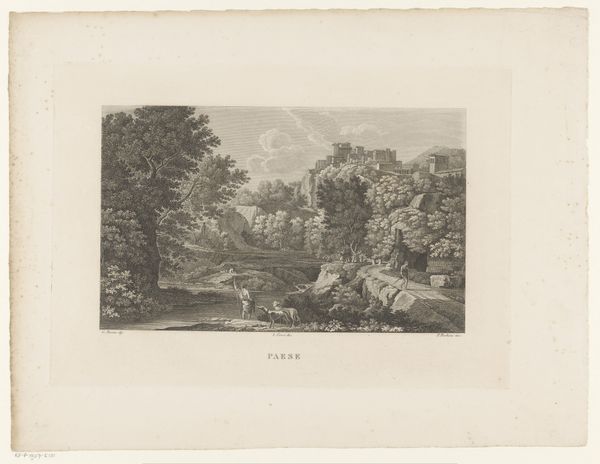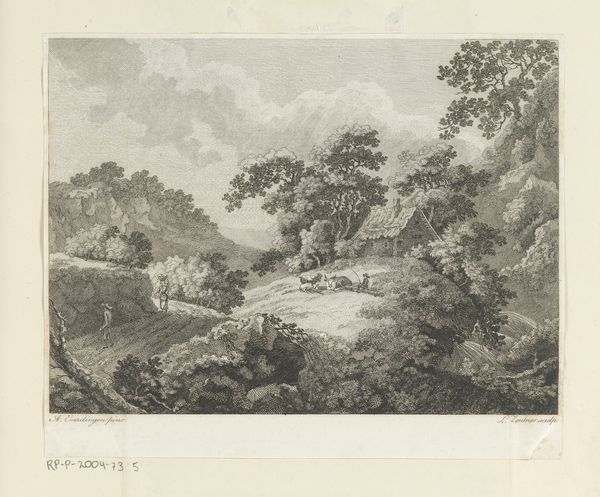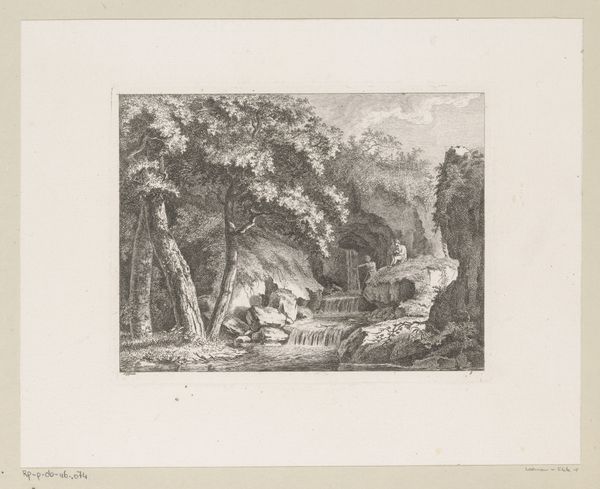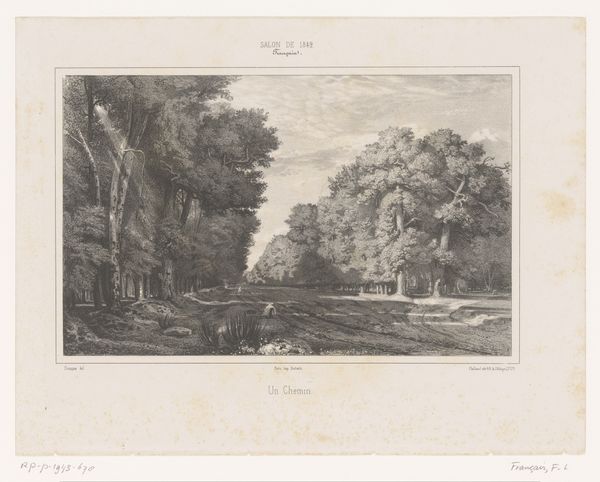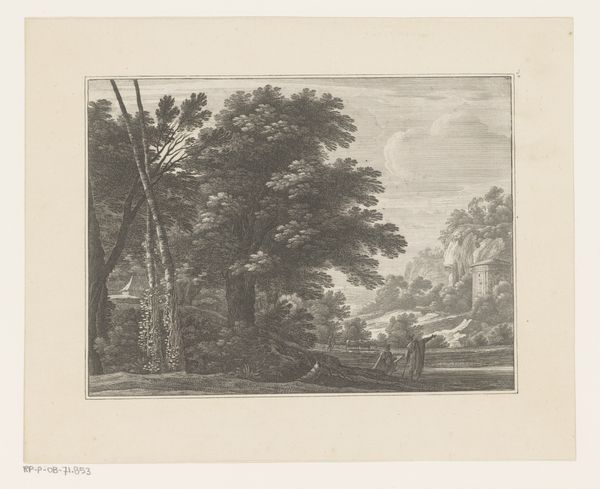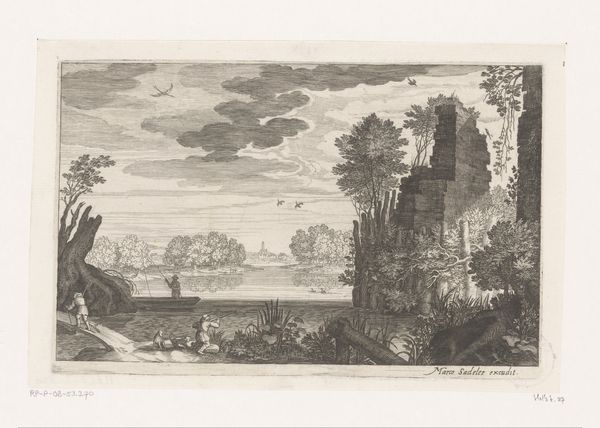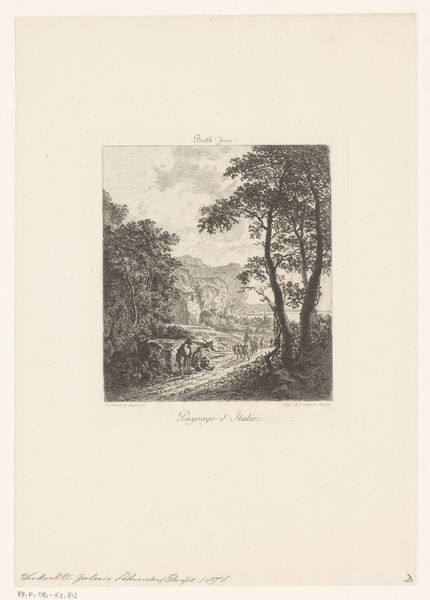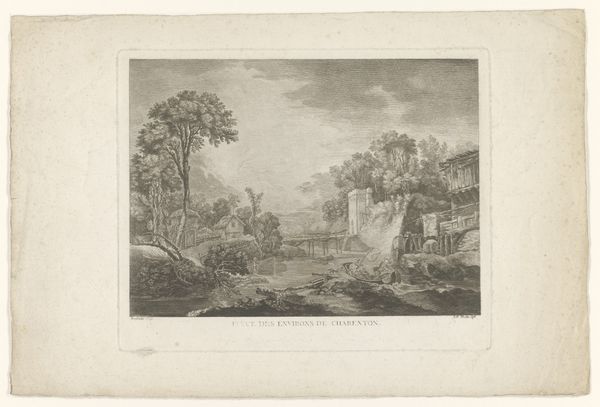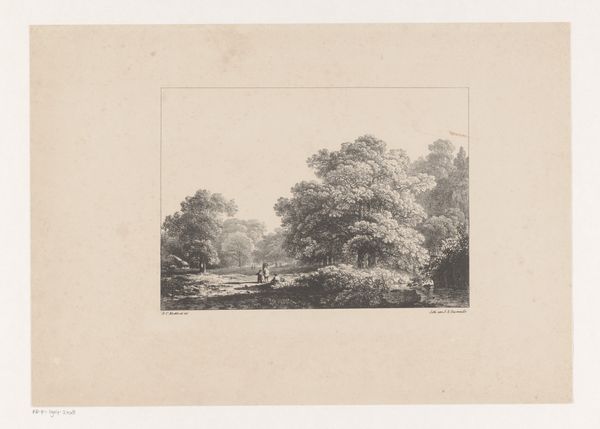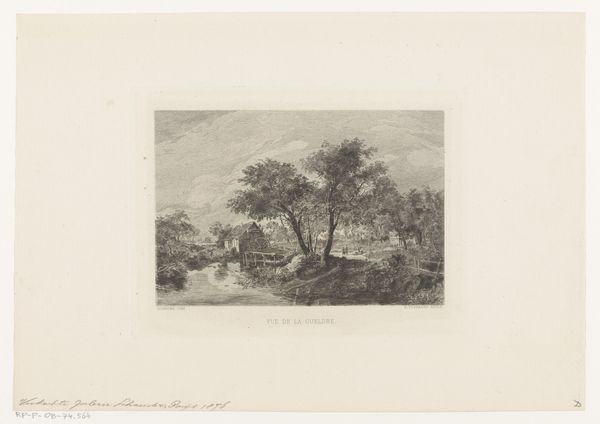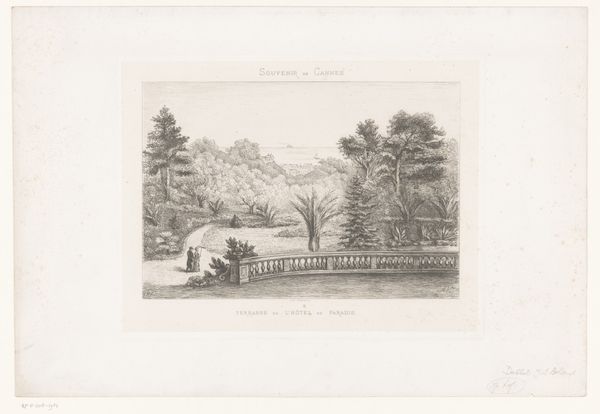
print, engraving
# print
#
old engraving style
#
landscape
#
river
#
romanticism
#
line
#
engraving
#
realism
Dimensions: height 227 mm, width 273 mm
Copyright: Rijks Museum: Open Domain
Editor: This is "Gezicht op de rivier Divie," or "View on the River Divie," an engraving by James Fittler, from around 1801-1802. It’s such a peaceful scene, a group of cows wade in the water and everything is so meticulously detailed. What do you see in this piece? Curator: Beyond the picturesque depiction of the River Divie, I see a representation of Romantic-era notions of nature and its relationship to societal structures. Consider how the idealized landscape, untouched, seemingly exists separately from the burgeoning industrial world. Who benefits from this constructed idyllic image, and whose labor is erased? Editor: That's interesting, I hadn’t thought about it like that. The focus seemed to be on the beauty of nature. So, who *is* this for then? Curator: This is a view that largely caters to the privileged. The image idealizes a rural scene divorced from the realities of the labor that would sustain it, appealing to an elite class who could afford to consume this version of reality through art. Do you notice how even the figures within the landscape are positioned more as observers or embellishments? Editor: Yes, now that you mention it, they're quite small in comparison to the vastness of the nature surrounding them. I see the farmers with cattle in the distance but only vaguely. Curator: Exactly! The artist creates this deliberate distancing. Furthermore, thinking about the time, consider the implications of representing a landscape as untouched at a moment when ideas about enclosure, property, and control over natural resources were becoming ever more urgent. Whose land is this? And who gets to define its beauty? Editor: I guess, focusing on just the visual beauty skips over important questions about land, labour, and who controls those narratives. It gives us this comfortable, pretty image but leaves out the bigger picture. Curator: Precisely. Analyzing art through an intersectional lens reveals not only artistic skill but also how power dynamics subtly shape even the seemingly innocent portrayals of the world around us. Editor: That makes me think a lot differently about landscapes now! Thanks, that's definitely given me something to reflect on.
Comments
No comments
Be the first to comment and join the conversation on the ultimate creative platform.
